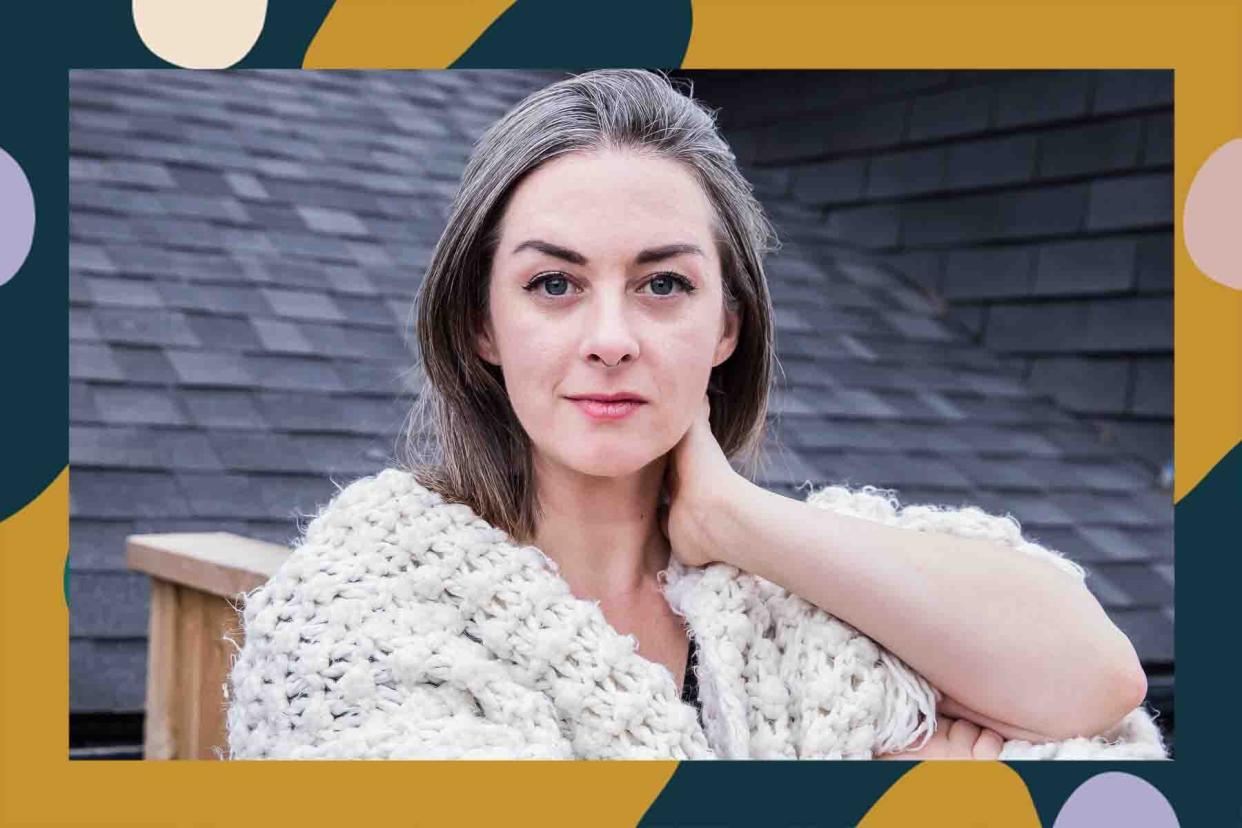I'm Going Gray at 23, and I'm Ok With That

Getty Images
Two years ago, I was at the hairdresser's when I noticed an abundance of gray hairs sparkling on my head. My mom was getting her hair done and, while I waited for her, I stopped in my tracks when I caught myself in the reflection of a mirror as I noticed that my naturally brunette hair was slightly changing. I panicked.
Almost immediately, I went online to research my "symptoms." Did I have an illness? Was I too stressed? I was confused and upset by my new salt and pepper strands—I didn't know what to do. During my research, I came across hundreds of forums of women asking the same question I had: "Finding gray hairs in my 20s—am I normal?"
My hair hasn't gone fully gray, nor is it highly noticeable, but I notice it. I notice it when I'm brushing my teeth and when I walk past a mirror, and I notice it most when I'm styling my hair. Every time I straighten or curl my hair, I'm greeted with silvery strands that look like tinsel. At just 23, it feels like I shouldn't have wiry strands of silver distributed throughout my hair—but I do.
I was just 21 when I first my gray strands. Back then, I'd stand in my bathroom, comb my hair into different partings to find new growth, and when I did, I would pluck them out. Using my fingers or a pair of tweezers, I would spend up to an hour plucking out any sign of silver because I felt "I was too young to go gray." I didn't want anybody to see them and think I was older than I was. It felt frustrating, unfair, and less than ideal.

Getty Images
For years, the only solution I could think of was to pluck them, so I plucked and plucked until I could no longer be bothered. This continued for a while, but then COVID-19 hit, and with it, massive stress. More grays began to sprout out, and eventually, there were way too many to keep up with. I gave up on plucking my gray hair and just let them be.
It felt like a big step for me, but it's something I needed to do. I knew I couldn't spend every evening glued to a mirror with a pair of tweezers in hand, plucking at my scalp. I knew it wasn't a healthy way to live. Plus, I figured that I have a whole life to live—a few gray strands shouldn't get in the way of that.
Going gray is a natural part of life, albeit your early twenties is young—but it's not entirely unheard of. Some women may start to go gray in their 30s or 40s, but for others, the process begins at 20. When people first notice a silvery strand, it doesn't mean they're "old." It usually comes down to one simple explanation: lack of melanin, and that comes down to genetics.
My dark, shiny brown hair color comes from melanin—a substance made by hair follicles. The color of our hair depends on the amount of melanin our hair produces, but melanin doesn't produce at the same speed or rate forever. As people age, their hair follicles make less of it which leads to less color. Hence, gray hair.
There are many successful, beautiful women who turned gray prematurely. From Sarah Harris, the deputy editor of British Vogue, to the Instagram page @grombe which celebrates gray hair in all of its beautiful forms. If it wasn't for these women fighting back against societal beauty standards, I don't think I'd have the courage to let my graying strands multiply.
My grays aren't slowing—they're becoming more and more noticeable as time goes by. However, I refuse to dye my hair and I refuse to pluck them out. I recently got a honey blonde balayage on my brunette tresses—not to conceal the gray strands, but to help them along. Gradually the balayage and the gray will meet in the middle and then that will be it, my hair will be gray. I no longer care if I go completely gray prematurely or if it begins to slow—I love myself and I won't ever cover my gray hairs up.

